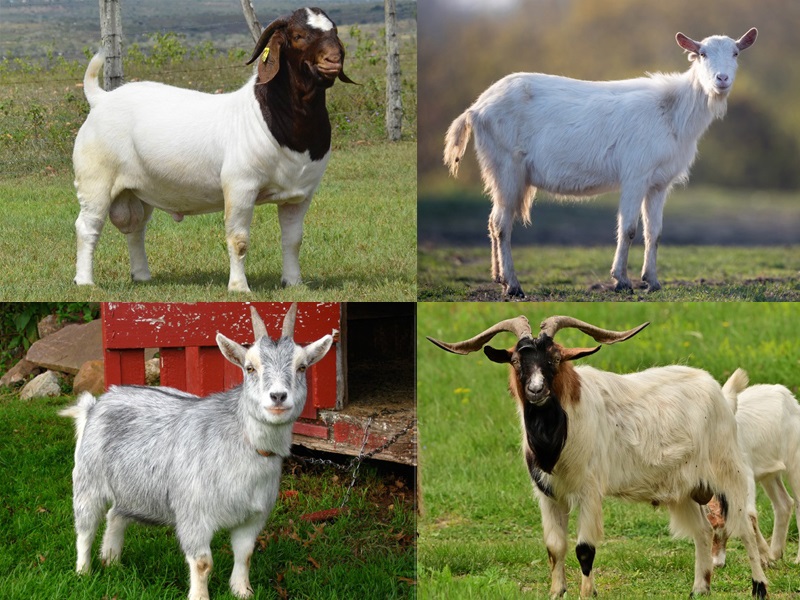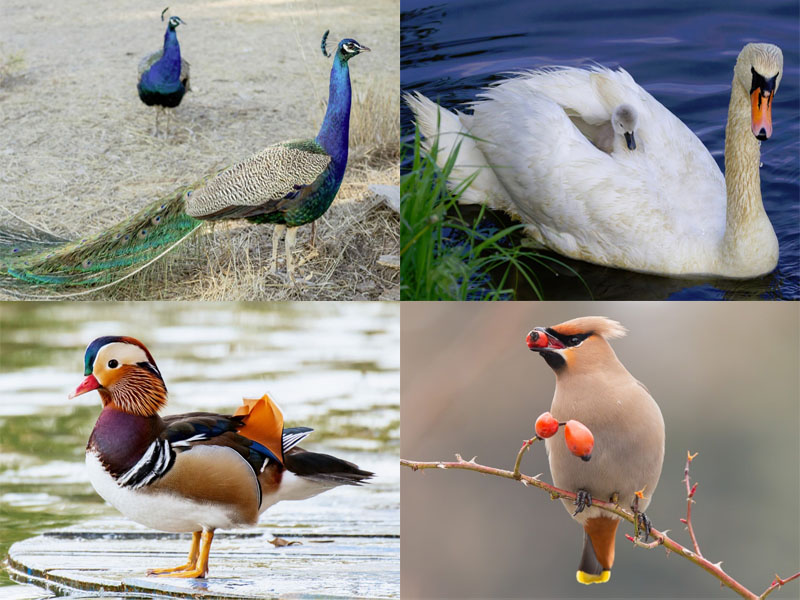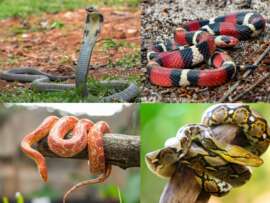The Turtle types are very diverse, with about 356 species which live on land and in water. They are found in various sizes, some being as big as 5 feet and some as small as only 4 inches. The shell of the turtle is a bony structure with a top layer and a bottom layer which is joined on the sides. It is made up of bones and cartilage. The top layer of the turtle’s shell is known as Carapace, while the bottom is known as Plastron. The Turtle classification can be done into 2 subgroups – Cryptodira, wherein the turtles retract their heads into their shells and Pleurodira, wherein the turtles fold their long necks into their shells. The turtle breeds onshore and does not lay eggs underwater.
Differences Between Turtle and Tortoise:
Most commonly, the term Turtle refers to the aquatic species which live in water. Tortoise refers to the terrestrial species which live on land.
The shell of the Tortoises is thick and heavy, while the shells of aquatic turtles are softer and lighter. This would ensure that they swim with ease without sinking.
The turtles have limbs which are adapted to help in swimming, like webbed feet with long claws. The Tortoises have short, sturdy feet. The heavy shells of the Tortoise, combined with its short feet, make its movement very slow.
Types Of Turtles In India:
The list of turtle names in India are,
1. Olive Ridley Turtle:
The Olive Ridley turtle species is the second smallest sea turtle in the world. It is the most abundant turtle species and is commonly known as the Pacific Ridley sea turtle. Its scientific name is Lepidochelysolivacea. This type of water turtle belongs to the family Cheloniidae and is found in the Indian, Pacific, and Atlantic oceans. The unique characteristic of this turtle species is mass nesting, where thousands of females lay eggs on the beach together.
They grow up to a length of 2 feet and weigh about 35-40 kgs.
- Food: They are carnivorous and feed on jellyfish, smaller fishes, snails, crabs, etc.
- Life Span: Maximum age 50 years
- Conservation Status: Vulnerable
2. Green Turtle:
The Green Sea turtle species belongs to the family Cheloniidae, and its scientific name is Cheloniamydas. It is also known as a Green turtle, Black sea turtle or Pacific green turtle and is mostly found in the Indian, Atlantic, and Pacific Oceans. It is referred to as a Green turtle due to a green fat below its olive or black carapace. This turtle species migrate for long distances between the feeding places and nesting places.
The adult sea turtle grows up to 1.5 mt. Long and weigh around 100 kgs.
- Food: They are primarily herbivorous, feeding on seagrasses.
- Life Span: Maximum age 80 years
- Conservation Status: Endangered
3. Hawksbill Turtle:
The Hawksbill Turtle is found along the coasts of the Pacific, Atlantic and Indian Oceans. This turtle species belongs to the family Cheloniidae. Its scientific name is Eretmochelys imbricate. These turtle species have a sharp point at their upper jaw, which helps them extract food from reefs. It has limbs like flippers.
The adult Hawksbill turtle weighs around 80 kgs and is up to 3ft in length. They are usually found in coral reefs.
- Food: Their diet mainly consists of sea sponges
- Life Span: Unknown
- Conservation Status: Critically Endangered
See More: Loveliest Rabbits in India
4. Loggerhead Turtle:
The Loggerhead turtle is an oceanic turtle species belonging to the family Cheloniidae. This type of turtle found in the Indian Ocean, Atlantic and Pacific too. The scientific name of this turtle is Carettacaretta. The upper neck and sides are brown on top and yellow on the sides and bottom. The carapace is divided into large plates. These types of turtles are the world’s largest hard-shelled turtles. They live in the oceans and shallow coastal waters.
An adult loggerhead measures about 35 inches and weighs about 135 kgs.
- Food: The Loggerhead turtle species are omnivorous and feed on small sea animals.
- Life Span: Around 47 – 67 years
- Conservation Status: Vulnerable
5. Leather Back Turtle:
The scientific name of the Leatherback Turtle is Dermochelyscoriacea. It is also called a luth. This Turtle species is the largest among all types of turtles. Unlike most other turtles, its outer shell (carapace) is covered with skin and oily flesh and is not bony. It is a native along the Pacific, Indian and Atlantic Oceans. The turtle habitat is in the seas and oceans.
The size of an adult Leatherback turtle is around 380 kgs and 1.55m.
- Food: This turtle species feeds on jellyfish.
- Life Span: 50 years or more
- Conservation Status: Vulnerable
6. Indian Flap shell Turtle:
The Indian Flap shell Turtle is a turtle species found in the freshwaters of SouthAsia. Its scientific name isLissemyspunctata and it belongs to the family Trionychidae. It is named as Flapshell as it has flaps of skin which cover the limbs when they retract into the shell. The Indian Flapshell turtle is adapted to survive drought conditions. It is used to reduce the pollution in certain aquatic water bodies as they feed on snails, insects and dad water animals.
The adult grows up to 14 inches.
- Food: This turtle species is omnivorous and feeds on frogs, fishes, plant leaves, flowers & fruits.
- Life Span: Unknown
- Conservation Status: Least Concern
7. Indian Softshell Turtle:
The Indian Softshell turtle is also known as the Ganges softshell turtle. This turtle species are found in South Asia, mainly in the rivers of the Ganges, Indus, and Mahanadi. Its scientific name is Nillssoniagangetica, and belongs to the family Trionychidae. The carapace has eight pairs of costal plates on it with indistinct dark eyespots. This turtle species is considered sacred and maintained in the temples of Orissa.
An adult of this turtle species grows up to 37 inches.
- Food: This turtle species is omnivorous and feeds on fishes, animal matter and aquatic plants.
- Life Span: Unknown
- Conservation Status: Vulnerable
8. Indian Roofed Turtle:
The Indian Roofed turtle gets its name due to a distinct roof on the uppermost part of its shell. This turtle species are found in the major rivers of South Asia. Its scientific name is Pangshuratecta, and it belongs to the family Geoemydidae. It has an elevated carapace with a black head and orange jaws and sides. Indian Roofed turtles are mostly found in quiet waters like streams and ponds. It is a common pet in India.
The adult turtle can grow up to 9 inches.
- Food: This turtle species is omnivorous and feeds on aquatic vegetation.
- Life Span: Unknown
- Conservation Status: Least Concern
9. Red-Crowned Roofed Turtle:
The red-crowned roofed turtle is a turtle species found in the freshwaters of South Asia. It is a type of water turtle. Its scientific name is Batagurkachuga, and belongs to the family Geomydidae. However, males are only half the size. These turtle species like to bask in the sun. It has been harvested for meat and shells and, along with the loss of habitat, has resulted in this turtle species becoming endangered. Adult females grow up to 22 inches and weigh around 25 kgs.
- Food: This turtle species is omnivorous and feeds on aquatic vegetation.
- Life Span: Unknown
- Conservation Status: Critically endangered
10. Indian Tent Turtle:
The Indian tent turtle is a turtle species found mainly in India and Bangladesh. Its scientific name is Pangshura tentoria, and it belongs to the family Geomydidae. They are mostly found in freshwater rivers and swamps. The Indian tent turtle has 3 subspecies present. They come under the types of turtles in India. They love basking in the sun on land and rocks, with their heads turned upwards.
It is a small species which grows only up to a maximum of 11 inches.
- Food: This turtle species is omnivorous and feeds on aquatic vegetation.
- Life Span: Unknown
- Conservation Status: Least Concern
Top 4 Types of Tortoises In India:
Listed below are some common Tortoise species in India,
1. Indian Star Tortoise:
The Indian Star Tortoise scientific name is Geocheloneelegans, and it belongs to the family Testudinidae. This tortoise species is mainly found in the dry areas and scrub forests in India, Pakistan, and Sri Lanka. It is very popular in India as an exotic pet.
The carapace of this tortoise is doom-shaped, forming humps in black and yellow colour. It has a unique feature where it rolls over back to the upright position when turned over.
It can grow up to 10 inches long.
- Food: The species is mainly herbivorous and feeds on grasses, fruits and flowers.
- Life Span: Unknown
- Conservation Status: Vulnerable
2. Asian Forest Tortoise:
The Asian Forest is also known as the Asian brown tortoise and is found primarily in Southeast Asia. This tortoise species is one of the most primitive species. Its scientific name is Manouriaemys, and belongs to the family Testudinidae. It is the largest tortoise in mainland Asia. There are 2 recognized subspecies. This is the only species in which the female lays its eggs in a nest built by it.
It can grow up to 25 kgs in weight.
- Food: The species is mainly herbivorous and feeds on grasses, fruits and flowers.
- Life Span: Unknown
- Conservation Status: Critically endangered
3. Travancore Tortoise:
The Travancore Tortoise is found in many regions like Karnataka. The scientific name of this tortoise is Indotestudotravancorica. They are present in hilly areas like forests and are omnivores. Travancore Tortoise is usually dormant during the summers and will stay hidden under leaves. They can usually be found in the evergreen forests of the Western Ghats.
It can grow up to 30cm in length and is one of the medium-sized tortoises.
- Food: It can eat anything from fruits, vegetables, frogs, carrion and even mushrooms.
- Life Span: Unknown
- Conservation Status: Vulnerable
4. Elongated Tortoise:
The elongated tortoise is one of the most beautiful of Indian tortoises. The scientific name is Indotestudoelongata. It can be found in hilly terrestrial areas that are home to great vegetation. The elongated tortoise is also called the yellow-headed tortoise, and the local Assamese name for it is Halodhiakaso. It is normally herbivorous.
It can grow to a length of 33cm.
- Food: All types of vegetation, fruits, flowers, etc.
- Life Span: Unknown
- Conservation Status: Endangered
Interesting Facts About Turtles and Tortoises:
- The Turtles are one of the most primitive beings and have existed for more than 215 million years old.
- Some turtle species lay eggs in the sand and allow them to hatch on their own. The hatched eggs then make their way to the sea with the risk of being predated upon.
- The Loggerhead Sea turtle picture is embalmed on the $1000 Colombian peso coin. It is also the official state reptile of South California.
- The Shell of Indian Flapshell Turtles is used for medicinal purposes in India and China. In China, the shell is burnt and ground with oil to cure skin diseases.
- The Indian softshell turtle species are considered sacred and maintained in the temples in Orissa.
The Turtles and Tortoises have lived on this earth since more than 215 million years and survived many disasters. You will see many turtle pictures and turtle images that are attractive. They have evolved and adapted and varied into more than 300 turtle species. However, a man with his intervention has created hap hazards in the environment resulting in global warming, depleting water bodies and high levels of pollution.
This has led to many species of turtles and tortoises becoming extinct and many of them falling into the endangered category. Combined efforts must be taken across the human race to protect these turtle species.
Frequently Asked Questions and Answers:
1. What food do turtles eat?
Ans: In terms of eating habits, turtles are of 2 kinds – herbivores and omnivores. An example of turtle names which is herbivore is a Green turtle. It feeds entirely on grasses and plants.
The Omnivores turtle species are Leatherback turtle, Indian tent turtle, Red-crowned turtle, etc. They feed on smaller water bodies like jellyfishes, sponges, frogs, snails, etc.
2. Which is the biggest and smallest turtle?
Ans: The largest turtle species is the Leatherback Seat turtle which weighs up to 900 kgs. It can grow up to 1.5m.
In the world, this is the smallest type of turtle. It grows just up to 3 inches and weighs as light as 100 – 165 gms. It is found in rocky terrains in parts of South Africa.
3. What are pet turtles and tortoises in India?
Ans: A number of species of turtles and tortoises are fondly kept as pets in India. There are many species are types of pet turtles as exotic pets. The wildlife protection act 1972 has banned many species of turtles and tortoises to be kept as pets as they are facing a threat of extinction.
Some examples of turtle names which can be kept as pets are Central American wood turtle, African Aquatic side neck turtle, Painted turtle, Red Ear Slider turtle, etc.


























































